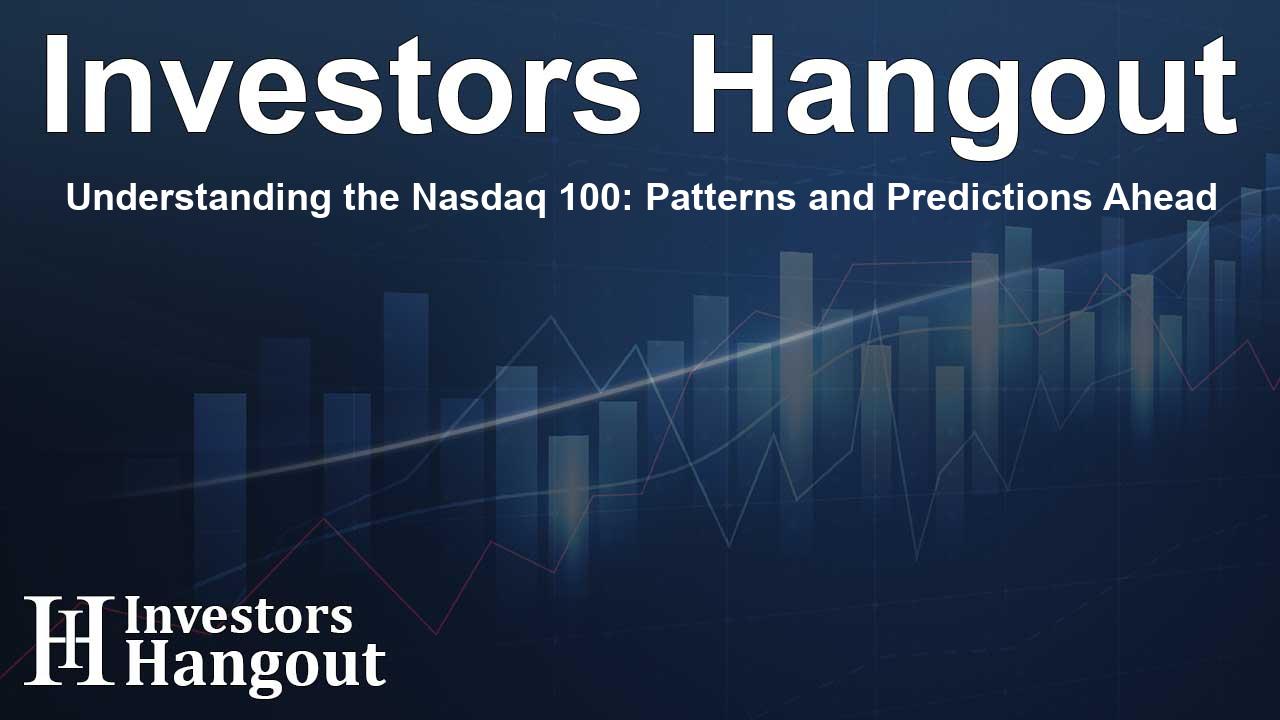Understanding the Nasdaq 100: Patterns and Predictions Ahead

Understanding the Nasdaq 100 Rally
The Nasdaq 100 index, often referred to as NDX, represents a vital segment of the equity market, and it's crucial to grasp its underlying principles to understand its movements. Following the Elliott Wave (EW) Principle can provide significant insights, particularly across extended timeframes. This approach recognizes that collective sentiment affects market trends, with more individuals participating in monthly evaluations than daily fluctuations.
A Preview of the Bull Market Since 2020
Since the trough stemming from the COVID-19 market collapse in March 2020, the Nasdaq 100 has embarked on an impressive bullish journey, identified as Primary-V in blue. This primary wave commenced at the noted COVID-19 low, offering an extended perspective on market activity. However, it's noteworthy that the progression of this bullish trend entails five waves, and the trend has yet to visibly ascend through all five since the March low.
The Early Waves Explained
Analyzing the movement in detail, we note that the initial wave (black Wave-1) spanned from March 2020 to November 2021, followed by a corrective phase (black Wave-2) concluding in October 2022. These phases reflected significant volatility, illustrating how lengthy and intricate market patterns can evolve.
Deciphering Current Waves in Action
Additions to this narrative involve identifying the recent market corrections and their implications. The notable “Trump Tariff Tantrum” crash saw the Nasdaq hit critical resistance levels, associating closely with earlier highs of black W-1. Therefore, it appears that this crash cannot classify as a 4th wave correction since overlapping waves violate EW principles.
Breaking Down the Waves
In reviewing the current landscape, we consider the NDX positioned within a 3rd wave of an ending diagonal (ED). This wave structure indicates the presence of three advancing waves (1, 3, 5), each subdivided into three smaller internal waves. As of now, we are progressing through the red W-c of W-3 after having established significant highs and lows earlier this year.
Recent Market Behavior and Predictions
Examining the current market movement indicates that the NDX is meticulously following an impulse pattern that showcases the potential for further escalation into higher ranges. Notably, the gray W-iii wave surpasses its anticipated target, reflecting robust upward momentum and establishing a path that may invoke further gains.
Setting Expectations for Continued Growth
Looking forward, targets between 24092 to 24694 seem plausible for the gray W-v. This anticipatory range aligns with common retracement levels, and a successful breach above recent highs would signal reaffirmation of the bullish trajectory. However, potential downturns necessitate caution as well, monitoring historical levels to mitigate risks.
Long-Term Outlook for the Nasdaq 100
The long-term outlook remains positive, with analysts suggesting the index could exceed 28000 in the upcoming years. Yet, it's imperative to remain grounded with realistic stop-loss boundaries. These act as indicators to assess when market divergence occurs from the established roadmap.
Understanding Risk Management
As various warning levels manifest, it’s crucial for investors to implement appropriate risk management strategies. Lower levels, such as 23484 and 22041, act as safety thresholds, helping investors navigate potential shifts in market sentiment that could catalyze downtrends.
Future Implications and Summary
In conclusion, the Nasdaq 100 index represents an evolving entity shaped by market sentiment and wave developments. As investors, keeping a pulse on the practical evolution of waves and comprehending the broader implications will enrich investment decisions. Ultimately, maintaining informed strategies and vigilant monitoring will foster successful navigation through these dynamic market conditions.
Frequently Asked Questions
What is the Nasdaq 100 index?
The Nasdaq 100 index represents 100 of the largest non-financial companies listed on the Nasdaq stock exchange, primarily focused on technology and growth sectors.
What is the Elliott Wave Principle?
The Elliott Wave Principle is a technical analysis tool that suggests that market price movements follow predictable patterns or waves, driven by investor sentiment.
How has the Nasdaq performed since March 2020?
Since the lows of March 2020, the Nasdaq 100 has undergone a substantial rally, characterized by significant bullish phases and occasional corrections.
What are wave counts in market analysis?
Wave counts help analysts understand the current phase of price movement in the market, identifying trends and potential reversals based on historical patterns.
What should investors consider when trading the Nasdaq 100?
Investors should consider market sentiment, historical wave patterns, and implement risk management strategies when trading this index to navigate potential volatility.
About The Author
Contact Evelyn Baker privately here. Or send an email with ATTN: Evelyn Baker as the subject to contact@investorshangout.com.
About Investors Hangout
Investors Hangout is a leading online stock forum for financial discussion and learning, offering a wide range of free tools and resources. It draws in traders of all levels, who exchange market knowledge, investigate trading tactics, and keep an eye on industry developments in real time. Featuring financial articles, stock message boards, quotes, charts, company profiles, and live news updates. Through cooperative learning and a wealth of informational resources, it helps users from novices creating their first portfolios to experts honing their techniques. Join Investors Hangout today: https://investorshangout.com/
The content of this article is based on factual, publicly available information and does not represent legal, financial, or investment advice. Investors Hangout does not offer financial advice, and the author is not a licensed financial advisor. Consult a qualified advisor before making any financial or investment decisions based on this article. This article should not be considered advice to purchase, sell, or hold any securities or other investments. If any of the material provided here is inaccurate, please contact us for corrections.
